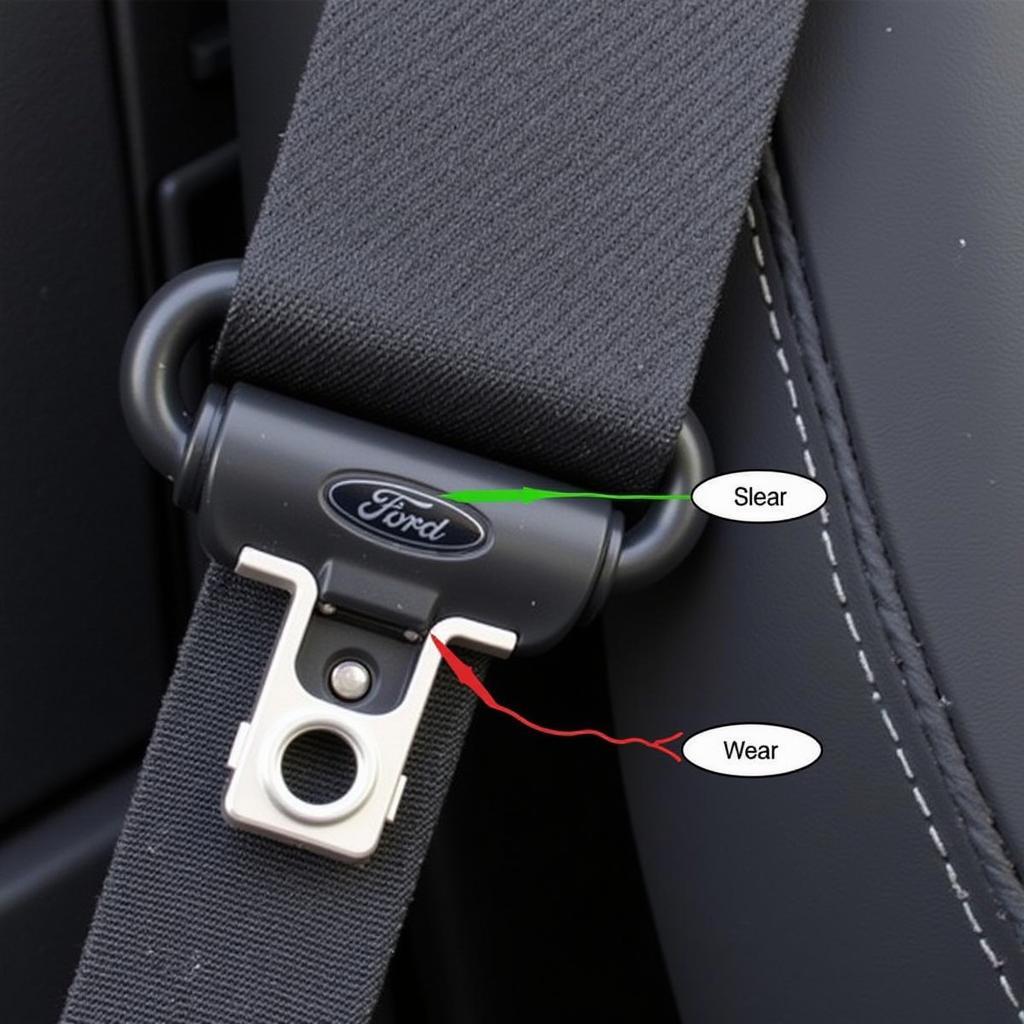The parking brake warning light on your 2017 Cadillac XT5 is a crucial safety feature that shouldn’t be ignored. It’s designed to alert you if there’s an issue with your parking brake system. Whether the light is on continuously, flashing intermittently, or accompanied by other warning lights, understanding the underlying causes is vital for a safe driving experience. This comprehensive guide delves into the potential reasons behind a 2017 Cadillac XT5 parking brake warning light and provides potential solutions.
Common Causes of Parking Brake Warning Light
Several factors can trigger the parking brake warning light in your 2017 Cadillac XT5. Here are some of the most common culprits:
1. Engaged Parking Brake
The most straightforward reason is simply that you haven’t fully disengaged the parking brake. It’s easy to overlook, especially if you’re used to electronic parking brakes. Before panicking, double-check that the parking brake is entirely released.
2. Low Brake Fluid Level
Your Cadillac XT5, like all vehicles with hydraulic braking systems, relies on brake fluid to transmit force from the brake pedal to the brake calipers. A low brake fluid level can trigger the parking brake warning light. This usually indicates a leak in the system, which requires immediate attention.
3. Faulty Brake Fluid Sensor
Your XT5 is equipped with a brake fluid level sensor that monitors the amount of brake fluid in the reservoir. If the sensor malfunctions, it can send a false signal, causing the parking brake warning light to illuminate even with adequate brake fluid.
4. Worn Brake Pads
While not directly related to the parking brake, excessively worn brake pads can sometimes trigger the parking brake warning light. This is because the brake pad wear indicator is integrated into the braking system and can sometimes overlap with the parking brake warning system.
5. Electrical Issues
Like any modern car, your Cadillac XT5 relies on a complex network of electrical components. A short circuit, loose wiring, or a faulty switch can disrupt the parking brake system’s electrical signals, leading to a false warning light.
Troubleshooting the Parking Brake Warning Light
If the parking brake warning light stays illuminated even after releasing the parking brake, further investigation is necessary. Here’s a step-by-step guide to help you troubleshoot the problem:
- Check the Brake Fluid: Park your XT5 on a level surface and turn off the engine. Open the hood and locate the brake fluid reservoir (refer to your owner’s manual if necessary). The reservoir should have a “MIN” and “MAX” marking. If the fluid level is below the “MIN” mark, add the recommended brake fluid until it reaches the “MAX” line.
- Inspect for Leaks: While checking the brake fluid level, visually inspect the area around the brake fluid reservoir, brake lines, and brake calipers for any signs of leaks. Look for wet spots, drips, or fluid residue.
- Test the Parking Brake Switch: If the brake fluid level is adequate and there are no visible leaks, the parking brake switch might be faulty. You can test this by engaging and disengaging the parking brake while listening for a distinct clicking sound from the switch. If the sound is absent or inconsistent, the switch might need replacement.
When to Seek Professional Help
While the steps above can help you identify and address basic issues, it’s essential to remember that the braking system is critical for your safety. If the parking brake warning light persists after performing these checks or you’re uncomfortable working on your vehicle, it’s best to seek professional assistance from a qualified mechanic or your Cadillac dealership.
Conclusion
A glowing parking brake warning light on your 2017 Cadillac XT5 shouldn’t be ignored. Understanding the potential causes and knowing how to perform basic troubleshooting can save you time, money, and potentially dangerous driving situations. If in doubt, always err on the side of caution and consult a professional.

